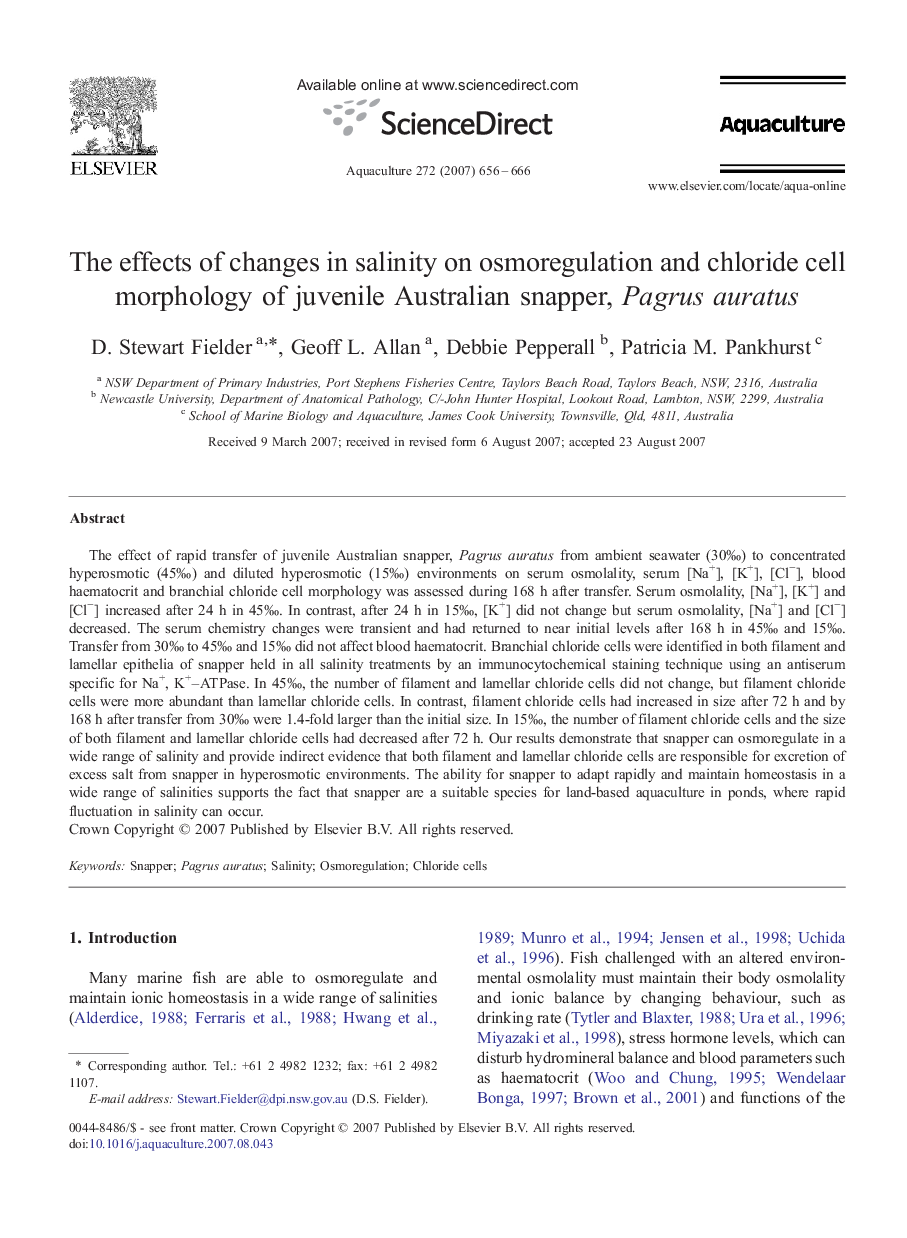| Article ID | Journal | Published Year | Pages | File Type |
|---|---|---|---|---|
| 8496683 | Aquaculture | 2007 | 11 Pages |
Abstract
The effect of rapid transfer of juvenile Australian snapper, Pagrus auratus from ambient seawater (30â°) to concentrated hyperosmotic (45â°) and diluted hyperosmotic (15â°) environments on serum osmolality, serum [Na+], [K+], [Clâ], blood haematocrit and branchial chloride cell morphology was assessed during 168Â h after transfer. Serum osmolality, [Na+], [K+] and [Clâ] increased after 24Â h in 45â°. In contrast, after 24Â h in 15â°, [K+] did not change but serum osmolality, [Na+] and [Clâ] decreased. The serum chemistry changes were transient and had returned to near initial levels after 168Â h in 45â° and 15â°. Transfer from 30â° to 45â° and 15â° did not affect blood haematocrit. Branchial chloride cells were identified in both filament and lamellar epithelia of snapper held in all salinity treatments by an immunocytochemical staining technique using an antiserum specific for Na+, K+-ATPase. In 45â°, the number of filament and lamellar chloride cells did not change, but filament chloride cells were more abundant than lamellar chloride cells. In contrast, filament chloride cells had increased in size after 72Â h and by 168Â h after transfer from 30â° were 1.4-fold larger than the initial size. In 15â°, the number of filament chloride cells and the size of both filament and lamellar chloride cells had decreased after 72Â h. Our results demonstrate that snapper can osmoregulate in a wide range of salinity and provide indirect evidence that both filament and lamellar chloride cells are responsible for excretion of excess salt from snapper in hyperosmotic environments. The ability for snapper to adapt rapidly and maintain homeostasis in a wide range of salinities supports the fact that snapper are a suitable species for land-based aquaculture in ponds, where rapid fluctuation in salinity can occur.
Related Topics
Life Sciences
Agricultural and Biological Sciences
Aquatic Science
Authors
D. Stewart Fielder, Geoff L. Allan, Debbie Pepperall, Patricia M. Pankhurst,
